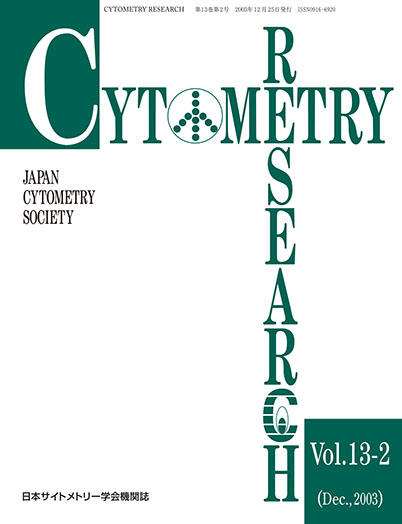Volume 13, Issue 2
Displaying 1-8 of 8 articles from this issue
- |<
- <
- 1
- >
- >|
The most excellent lecture at the 13th meeting of JCS
-
2003 Volume 13 Issue 2 Pages 1-5
Published: December 25, 2003
Released on J-STAGE: July 11, 2017
Download PDF (764K)
original paper
-
2003 Volume 13 Issue 2 Pages 7-12
Published: December 25, 2003
Released on J-STAGE: July 11, 2017
Download PDF (1374K) -
2003 Volume 13 Issue 2 Pages 13-18
Published: December 25, 2003
Released on J-STAGE: July 11, 2017
Download PDF (1616K) -
2003 Volume 13 Issue 2 Pages 19-24
Published: December 25, 2003
Released on J-STAGE: July 11, 2017
Download PDF (697K)
review
-
2003 Volume 13 Issue 2 Pages 25-29
Published: December 25, 2003
Released on J-STAGE: July 11, 2017
Download PDF (869K) -
2003 Volume 13 Issue 2 Pages 31-38
Published: December 25, 2003
Released on J-STAGE: July 11, 2017
Download PDF (1643K) -
2003 Volume 13 Issue 2 Pages 39-43
Published: December 25, 2003
Released on J-STAGE: July 11, 2017
Download PDF (1402K) -
2003 Volume 13 Issue 2 Pages 45-53
Published: December 25, 2003
Released on J-STAGE: July 11, 2017
Download PDF (2047K)
- |<
- <
- 1
- >
- >|
